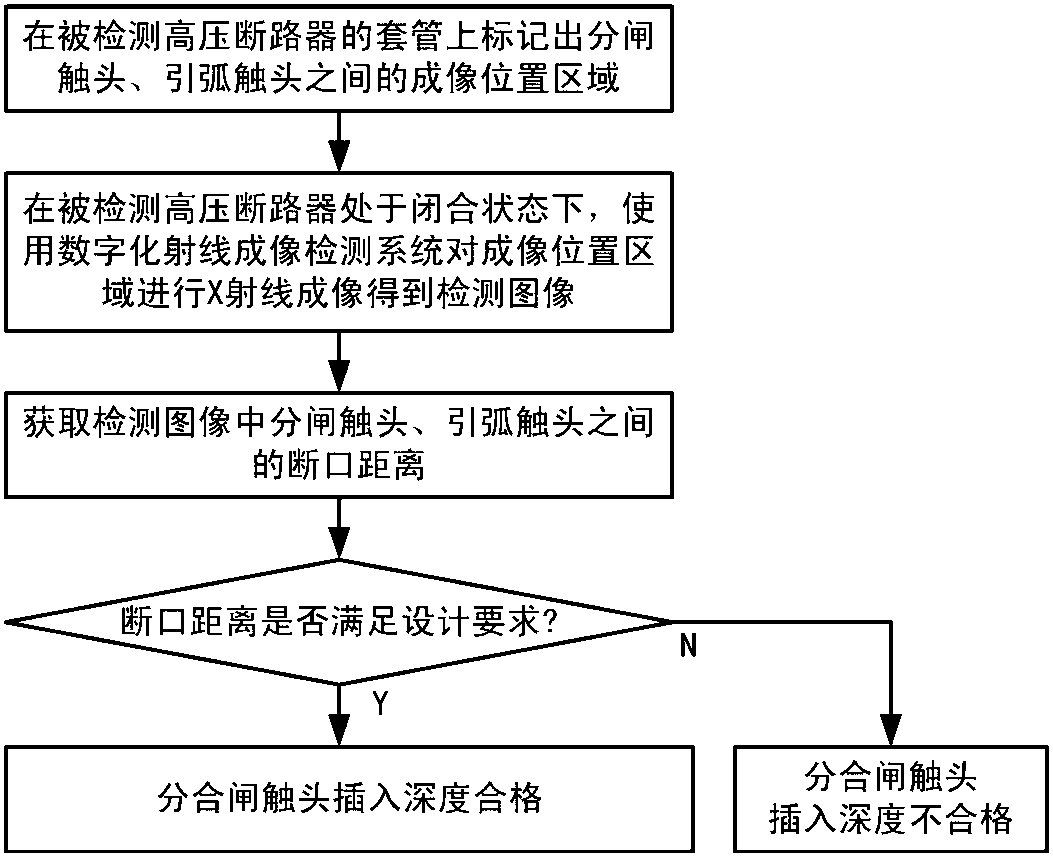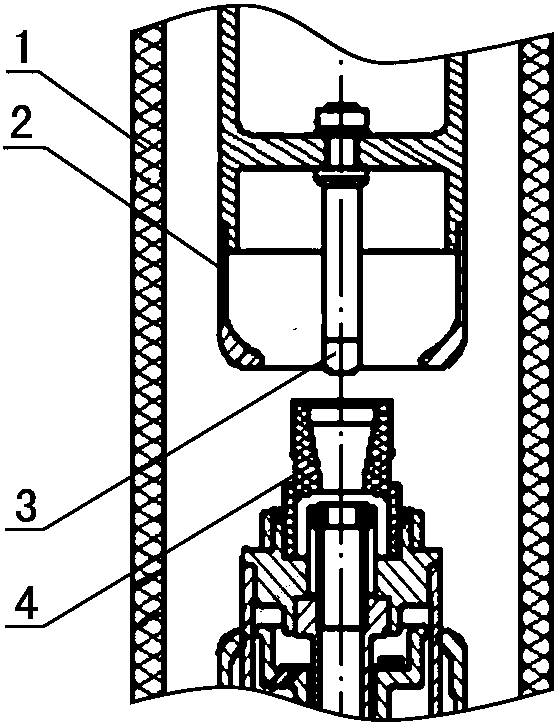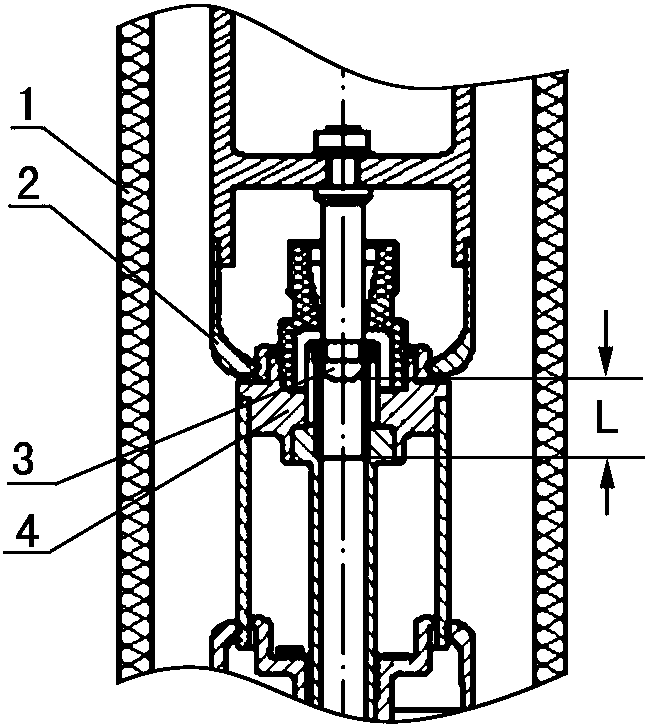Imaging detection method for insertion depth of opening and closing contacts for high-voltage circuit breakers
A high-voltage circuit breaker, imaging detection technology, applied in instruments, measuring devices, using wave/particle radiation, etc., can solve the problem of insufficient insertion depth of opening and closing contacts, and achieve the effect of simplifying conditions and requirements
- Summary
- Abstract
- Description
- Claims
- Application Information
AI Technical Summary
Problems solved by technology
Method used
Image
Examples
Embodiment Construction
[0027] Such as figure 1 As shown, the steps of the imaging detection method for the insertion depth of the opening and closing contacts of the high-voltage circuit breaker in this embodiment include:
[0028] 1) Mark the imaging position area between the opening contact and the arcing contact on the bushing of the tested high-voltage circuit breaker;
[0029] 2) When the detected high-voltage circuit breaker is in the closed state, use the digital radiography detection system to perform X-ray imaging on the imaging position area to obtain the detection image;
[0030] 3) Obtain the fracture distance L between the opening contact and the arcing contact in the detection image, and judge whether the fracture distance L meets the design requirements of the detected high-voltage circuit breaker, and if so, determine the opening and closing of the detected high-voltage circuit breaker The insertion depth of the contact is qualified, otherwise it is determined that the insertion dep...
PUM
 Login to View More
Login to View More Abstract
Description
Claims
Application Information
 Login to View More
Login to View More - R&D
- Intellectual Property
- Life Sciences
- Materials
- Tech Scout
- Unparalleled Data Quality
- Higher Quality Content
- 60% Fewer Hallucinations
Browse by: Latest US Patents, China's latest patents, Technical Efficacy Thesaurus, Application Domain, Technology Topic, Popular Technical Reports.
© 2025 PatSnap. All rights reserved.Legal|Privacy policy|Modern Slavery Act Transparency Statement|Sitemap|About US| Contact US: help@patsnap.com



